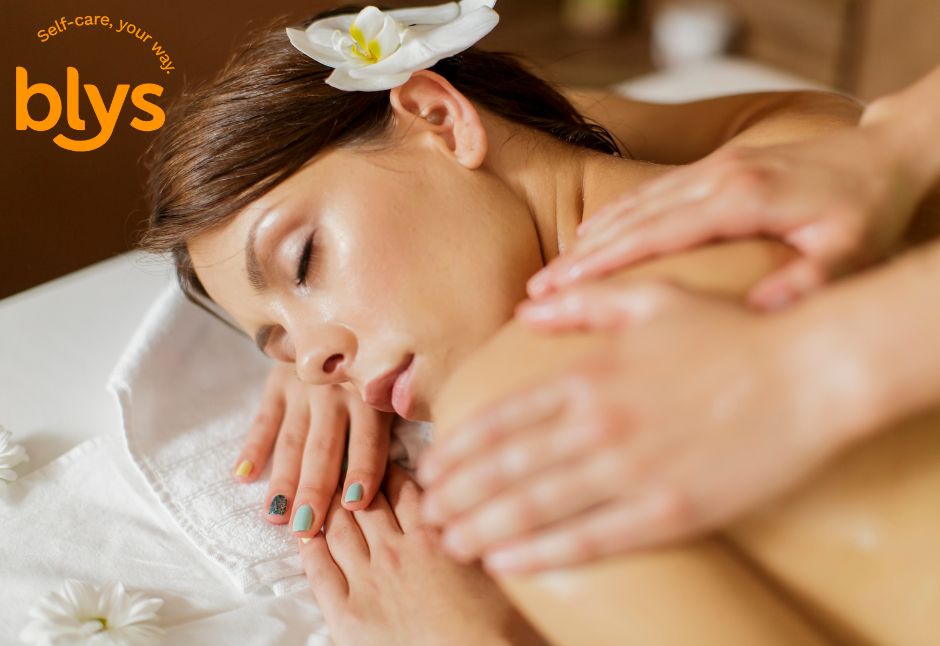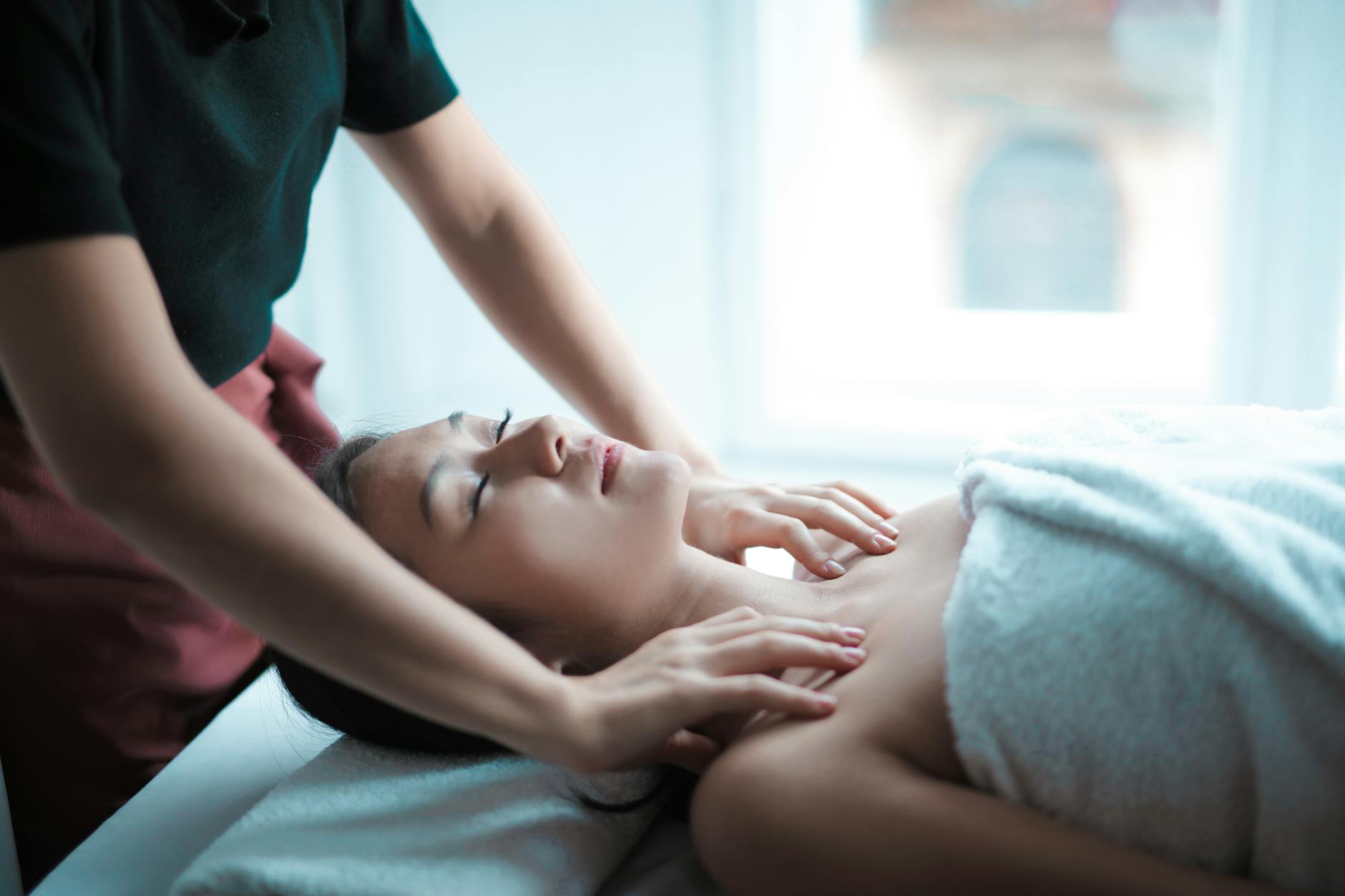
Most people think of massage as a way to unwind after a long week, but the truth is that your body goes through measurable changes during and after a session. Muscles, circulation, the nervous system, even mood-regulating chemicals all respond in ways that explain why massage feels so restorative.
At the same time, massage has long been surrounded by myths. One of the most common is the idea that it “releases toxins” trapped in the muscles, a phrase often used in spa menus or wellness marketing. While the thought is appealing, science tells a more interesting and accurate story.
What really happens involves metabolic by-products such as lactic acid, shifts in blood and lymphatic circulation, and the release of endorphins that calm stress. Understanding these effects helps you appreciate massage as more than just pampering it’s a physiological process that supports both body and mind.
The Common “Toxins” Myth
One of the most common claims in massage culture is that a session “flushes toxins” from your body. You’ll hear it in spa advertising, on wellness blogs, and sometimes even from therapists encouraging you to drink water after your treatment. The phrase sounds convincing, but it’s more myth than science.
Where the idea comes from:
- Rooted in early spa marketing, where detox was used as a selling point.
- Reinforced by the popularity of “cleanse” and “detox” trends in wellness culture.
- Simplified explanation that makes massage sound like it’s doing more than relaxation.
What experts actually say:
- Massage improves blood and lymphatic circulation, which supports your body’s existing detox systems.
- The liver, kidneys, and lymphatic network naturally filter waste; massage does not “squeeze toxins out of muscles.”
- The benefits people feel lightness, calm, less stiffness come from reduced tension and better circulation, not toxin release.
The American Massage Therapy Association states there is no evidence massage flushes toxins (AMTA). Other practitioners agree: what massage really does is support circulation, mobility, and wellbeing, rather than removing harmful substances
What massage really releases in the body
If massage doesn’t push toxins out of your muscles, what does it actually influence? The real effects are found in how it interacts with metabolic by-products, circulation, and the nervous system.
Muscle By-Products and Lactic Acid
During exercise, your muscles generate lactic acid and other metabolic waste. These aren’t dangerous toxins, but they can contribute to short-term soreness and fatigue. Massage improves circulation, which helps your body process these substances more efficiently.
A 2023 study showed that post-exercise massage significantly lowered lactic acid levels compared with rest alone.
Circulation and Waste Clearance
One of the key effects of massage is its impact on circulation. When pressure and movement are applied to soft tissue, blood flow to the muscles increases, delivering oxygen and nutrients while also assisting in the removal of metabolic waste. This doesn’t mean toxins are physically pressed out of muscle fibres.
Instead, enhanced circulation gives the liver, kidneys, and lymphatic system the support they need to process and filter everyday by-products more efficiently. Research highlights that massage can improve peripheral circulation and venous return, which plays an important role in recovery after physical activity
Endorphins and Mood Regulation
Massage also influences brain chemistry. Endorphins your body’s natural pain relievers are released, creating a sense of ease. Levels of serotonin and dopamine rise as well, which explains the mood lift and reduced stress many people feel afterwards. These changes are well-documented in research exploring massage and mental wellbeing.
Nervous System Reset
Another important effect is the activation of the parasympathetic nervous system, also known as the “rest and digest” state. When this system takes over, heart rate decreases, cortisol levels fall, and the body redirects its energy toward repair and recovery. This is why massage leaves you not only less tense but also calmer and more balanced.
Boosting circulation, easing stress, and supporting immune health are all part of what really happens during a massage. Discover the full benefits with a Blys at-home massage today.
Massage and Your Circulatory System
One of the most noticeable physiological responses to massage is its effect on circulation. By applying pressure and movement to muscles and connective tissue, massage encourages better blood flow and oxygen delivery. This creates a chain of benefits that help the body recover and function more efficiently.
How circulation improves through massage:
- Increased oxygen and nutrients: Enhanced blood flow delivers essential resources to muscle tissue, supporting repair and performance.
- Removal of metabolic by-products: Substances such as carbon dioxide and lactic acid are moved into the bloodstream, where the liver and kidneys can process them effectively.
- Similar to light exercise: Massage mimics the circulation boost that comes from gentle activities like walking or stretching, but without additional strain on the body.
Research has shown that massage can improve local blood flow and assist in recovery from muscular fatigue, though its effects are often moderate compared with active exercise.. Still, for people recovering from injury, dealing with mobility issues, or simply looking for post-workout support, massage offers a safe and restorative alternative.
Massage and the Lymphatic System
Massage also supports the lymphatic system, which is central to immune health and fluid balance. Unlike the circulatory system, the lymphatic network doesn’t have a pump like the heart it depends on muscle movement and external pressure.
Massage provides that gentle push, encouraging fluid flow and reducing build-up.
Key points about massage and the lymphatic system:
- Fluid balance: Massage helps move excess fluid back into the bloodstream, where it can be filtered by the kidneys and liver.
- Immune support: Improved lymph flow allows immune cells to circulate more effectively, strengthening the body’s natural defences.
- Hydration matters: Drinking water after a massage doesn’t flush toxins, but it helps the kidneys process mobilised fluids and lowers the chance of post-massage headaches or fatigue.
- Myth vs reality: The lymphatic system doesn’t sweat out toxins; massage simply supports its natural role in keeping the body balanced.
By understanding this, it’s easier to see massage not as a detox shortcut, but as a supportive therapy that works with your body’s natural processes. It’s another way massage encourages overall wellbeing, helping you feel lighter, more relaxed, and better prepared to face the demands of everyday life.
Metabolic Effects and Muscle Recovery
Massage is widely recognised for its role in supporting recovery after physical activity. For many, the most noticeable effect is relief from delayed-onset muscle soreness (DOMS) the stiffness and discomfort that often appear 24 to 48 hours after exercise. By easing tension and improving circulation, massage helps muscles recover more efficiently.
How massage supports recovery:
- Relief from DOMS: Regular massage has been shown to ease post-exercise soreness by reducing muscle tightness and promoting faster repair.
- Reduction of inflammation: Research found that massage therapy decreased inflammatory cytokines while boosting mitochondrial function in muscle cells, improving recovery at the cellular level.
- Improved mobility and flexibility: By releasing tight fascia and increasing muscle elasticity, massage enhances range of motion, making everyday movement or athletic performance more comfortable.
These effects aren’t about removing toxins; they’re about restoring balance in the body. The result is less soreness, reduced inflammation, and better physical function. Athletes may notice faster recovery between training sessions, while anyone dealing with stiffness from work or daily life can benefit from looser, more responsive muscles.
Massage doesn’t just help muscles recover; it also improves flexibility and movement in everyday life. Explore how with a Blys sports massage at home and feel the real benefits for your body.
When to Be Cautious
Massage is safe for most people, but there are situations where a little extra care is needed. Consulting a GP or healthcare professional before booking a session is always recommended if you have certain health conditions or concerns.
When to seek medical advice before massage:
- Pregnancy: While prenatal massage can be safe and beneficial, it should only be done by a therapist trained in pregnancy care.
- Blood clotting disorders or circulatory issues: Massage increases circulation, which may pose risks for people with clotting conditions.
- Skin conditions or infections: Open wounds, rashes, or skin infections should be avoided until fully healed.
It’s also normal to experience some temporary side effects after a massage.
These can include:
- Mild soreness in muscles that were worked on.
- A feeling of fatigue as the nervous system shifts into relaxation mode.
- Thirst, due to increased circulation and fluid movement.
These are natural adjustments as your body responds to the session and are generally short-lived. Drinking water, resting, and allowing the body to reset usually ease these effects quickly.
Massage should be seen as supportive care, not a risk. With the right precautions, it remains a safe, effective way to enhance wellbeing.
Massage as Part of Overall Wellness
Massage is sometimes marketed as a quick detox or instant fix, but its true value lies in how it supports overall wellness. The effects build over time, helping the body and mind maintain balance rather than offering a one-off solution.
Regular massage encourages relaxation, reduces stress, and eases tension, all of which contribute to better mental health. It also supports physical recovery by improving circulation, reducing inflammation, and enhancing flexibility. When seen as part of a broader self-care routine, massage works alongside other healthy habits like exercise, rest, and good nutrition to create lasting benefits.
Another strength of massage is its ability to address both the physical and psychological aspects of wellbeing. Feeling calmer, sleeping better, and moving more freely are all interconnected, and massage provides a bridge between these areas.
With Blys, weaving massage into your lifestyle becomes simple. By booking a vetted practitioner to come directly to your home, you can enjoy these benefits regularly without the stress of travel or scheduling around clinic hours. Whether it’s for relaxation, recovery, or stress relief, massage becomes an accessible part of your wellness journey.
The Real Story Behind Massage With Blys
Massage is often described as a way to “flush out toxins,” but science tells a different story. There is no magical release of harmful substances during a session. What truly happens is far more interesting: circulation improves, the lymphatic system gets a gentle boost, stress hormones decline, and the nervous system shifts into a calmer state.
Muscles recover faster, flexibility increases, and the mind feels lighter all of which are measurable benefits backed by research. Rather than seeing massage as a quick detox, it’s better understood as an essential part of self-care.
It supports the body’s natural processes, helps you recover from stress or physical activity, and contributes to long-term wellbeing. The real value lies in how it leaves you feeling restored, balanced, and ready to take on the demands of daily life.
Ready to experience the science-backed benefits of massage? Book a massage near you with Blys and enjoy expert care delivered straight to your door.





